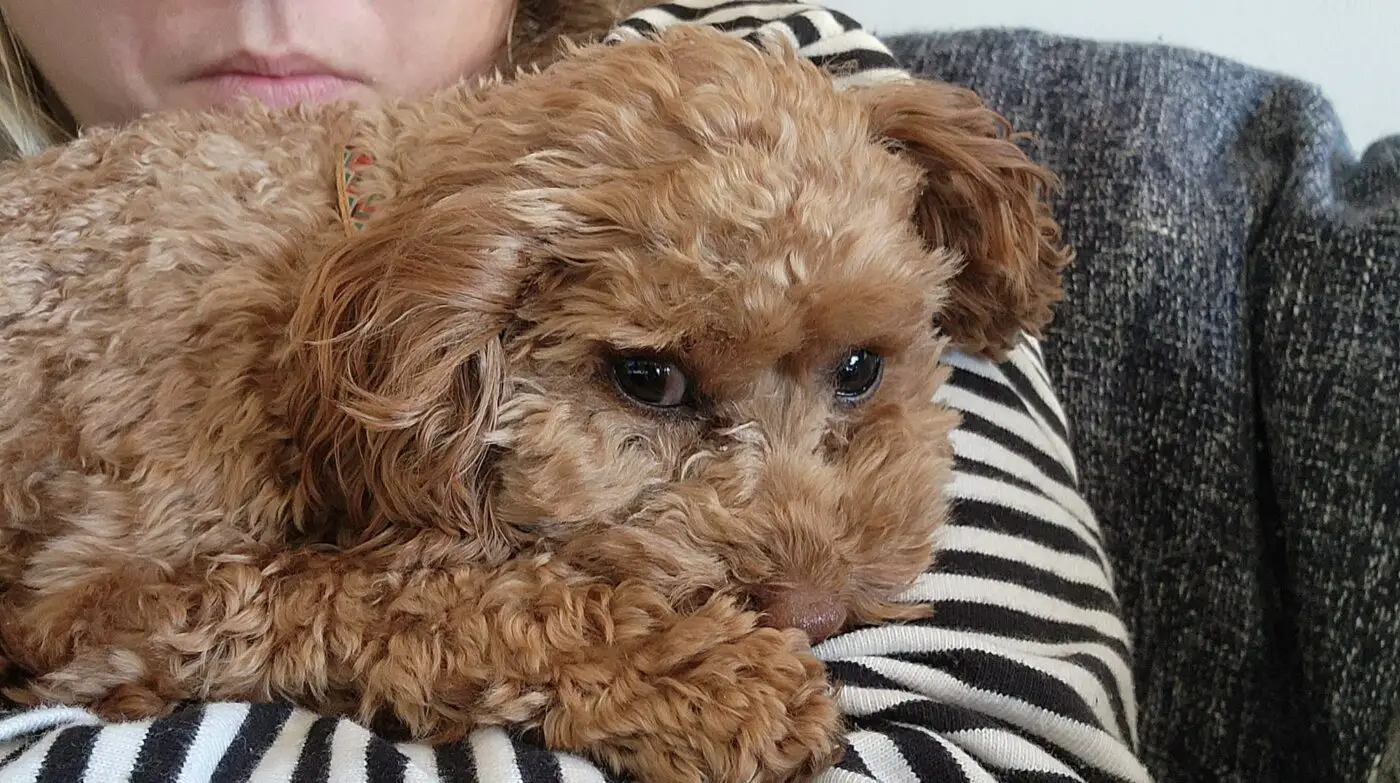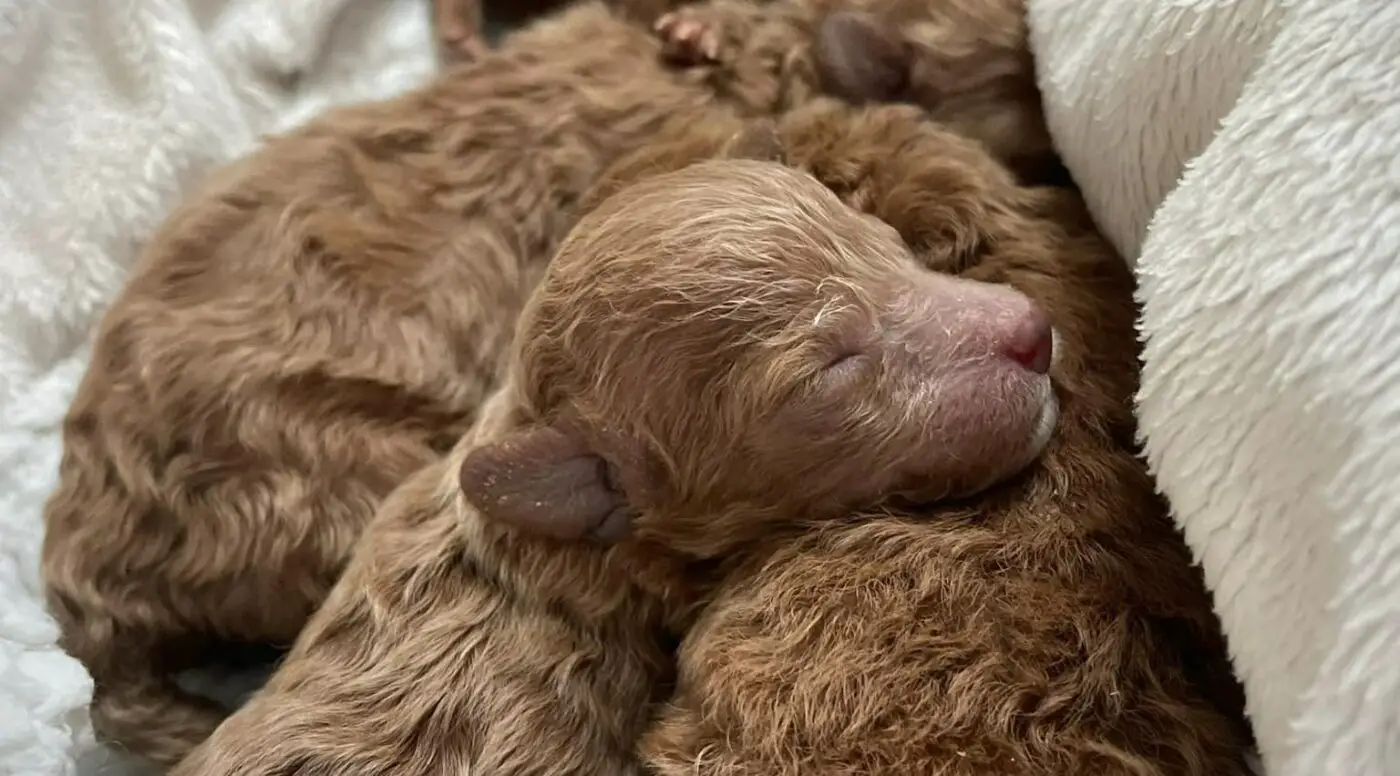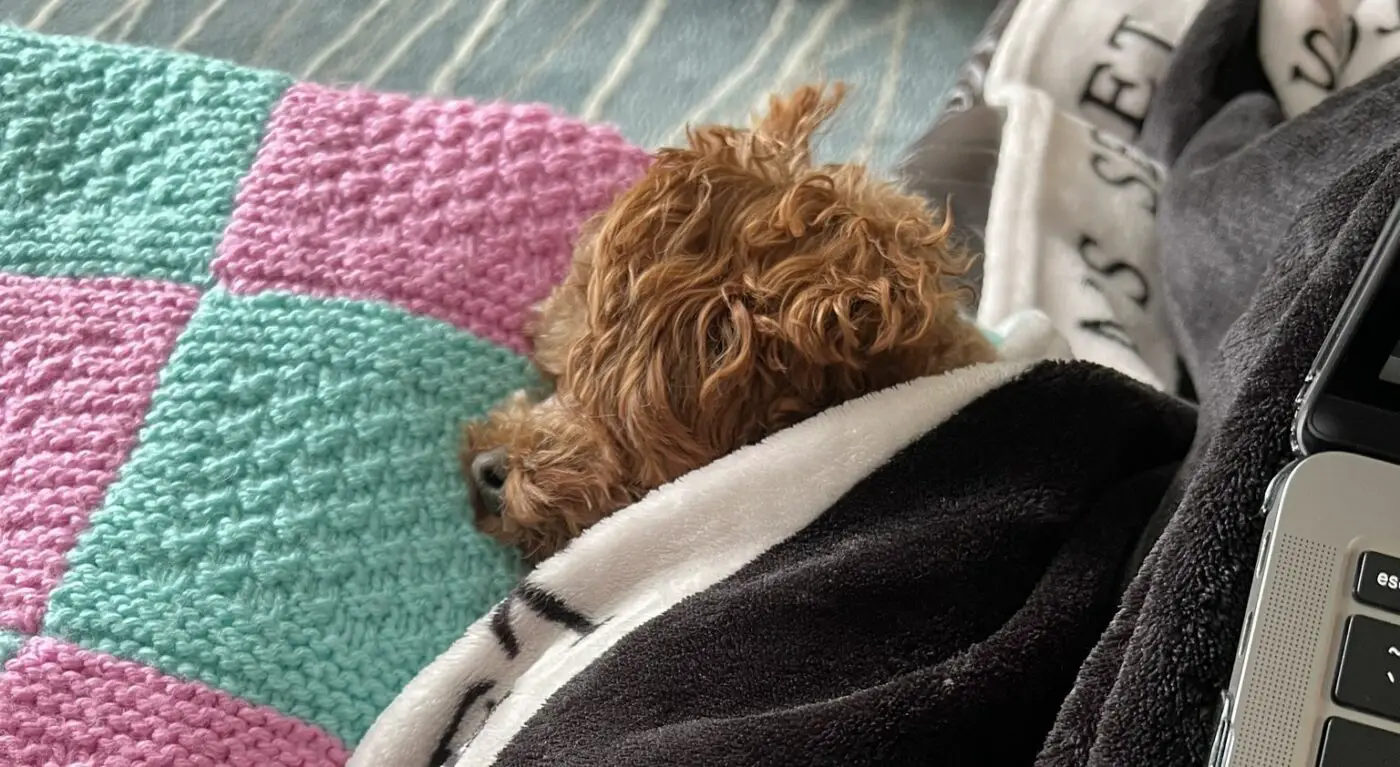Deciding when to neuter or spay a toy poodle is a common consideration for many pet owners.
The timing of this procedure can have significant implications on a dog’s health and behavior.
It’s a topic that generates much discussion due to the varying recommendations from breeders, veterinarians, and pet forums.
Balancing the benefits of these procedures, such as preventing unwanted litters and certain health issues, with potential risks like the impact on a poodle’s growth and development, forms the crux of this important decision.
Understanding the best time to spay or neuter a toy poodle is crucial for their overall well-being and longevity.
The best time to neuter or spay a Toy Poodle typically ranges between 4 to 9 months for females and 6 to 11 months for males.
- When To Neuter or Spay a Toy Poodle
- Benefits of Neutering or Spaying a Toy Poodle
- Neutering Complications and Risks for Toy Poodles
- Considerations for Spaying a Female Toy Poodle
- FAQs
- Q: How does spaying or neutering affect a toy poodle’s size?
- Q: What impact does early spaying or neutering have on a toy poodle’s health?
- Q: Should I spay or neuter my toy poodle based on their breed?
- Q: What is the role of a veterinarian in determining the best time to spay or neuter my toy poodle?
- Q: How does spaying or neutering impact a toy poodle’s behavior?
- Conclusion and final thoughts
When To Neuter or Spay a Toy Poodle

The recommended age to neuter or spay a toy poodle falls between four months and one year for males, while for females it’s typically at around one year.
The decision on when to neuter or spay your toy poodle can depend on several factors. These include their health, behavior, and your personal circumstances.
For male toy poodles, neutering is typically done between four to six months old and up to one year old.
This early intervention often prevents the development of certain undesirable behaviors such as marking.
However, some prefer to wait until the dog has fully matured, beyond a year old, to allow for complete physical development.
For female toy poodles, spaying is often suggested at around one year of age.
This provides time for the dog to reach physical maturity, which can contribute to overall health and well-being.
However, it’s worth noting that some veterinarians recommend spaying as early as three to four months, particularly to prevent the first heat cycle and associated risks of unwanted pregnancy.
From my experience as a veterinarian, I’ve seen that each dog is unique, and there isn’t a one-size-fits-all answer.
It’s important to consider your toy poodle’s individual health, behavior, and lifestyle.
Benefits of Neutering or Spaying a Toy Poodle

Neutering or spaying a toy poodle offers numerous benefits including reduced health risks, behavioral improvements, and prevention of unwanted litters, among others.
Reduced Health Risks
Neutering or spaying can substantially decrease the likelihood of certain health issues in toy poodles.
For males, neutering eliminates any potential for testicular cancer and significantly reduces the occurrence of prostate problems.
For females, spaying before the first heat cycle can greatly reduce the risk of mammary gland tumors, and completely eradicates the risk of ovarian and uterine cancers.
These preventative measures can lead to a healthier, happier life for your pet.
Behavioral Improvements
Behavioral changes are often seen after neutering or spaying. Male dogs tend to be less territorial and aggressive, helping to mitigate dominance-related issues and marking behaviors.
Females that are spayed will not go into heat, which can prevent behaviors like yowling and frequent urination, making them more comfortable and easier to manage.
Longer Lifespan
The procedure can contribute to an extended lifespan for your toy poodle.
This is likely due to the reduced risk of various diseases and cancers, as well as a decreased likelihood of accidents occurring while roaming in search of a mate says Vets 4 Vets.
Prevention of Unwanted Litters
Unwanted litters can be effectively prevented by spaying or neutering your toy poodle. This not only helps control the pet population but also reduces strain on animal shelters and resources.
Decreased Risk of Roaming
Unneutered dogs often roam in an attempt to find a mate. By neutering or spaying your dog, this behavior can be significantly reduced, leading to fewer instances of lost pets or accidents caused by roaming say Daily Paws.
Easier Training and Socialization
Spayed or neutered dogs are often easier to train and socialize. They are less likely to be distracted by hormonal urges, allowing them to focus more on their training and interactions with others, both human and canine as per Chewy.
Cost-Effective

While there is an immediate cost associated with the procedure, neutering or spaying can save you money in the long run says Blue Cross. It helps avoid costs related to health complications, unwanted litters, and potential damage caused by behavioral issues.
Contribution to Public Health
Spaying and neutering contribute to public health by reducing the number of stray and homeless dogs. This, in turn, lowers the potential spread of diseases that these animals could carry.
Reduced Risk of Pyometra (in females)
Pyometra is a severe and potentially fatal condition that can affect unspayed females. The risk of this condition is completely eliminated by spaying.
Decreased Hormonal Driven Behaviors
Hormonal-driven behaviors such as aggression, marking, and the urge to roam can be reduced significantly by spaying or neutering your toy poodle says Dog Time. This can result in a more relaxed and manageable pet.
Neutering Complications and Risks for Toy Poodles

While neutering or spaying a toy poodle generally offers numerous benefits, it’s important to understand that, like any surgical procedure, it also carries certain risks and potential complications including post-surgery complications, prostate cancer, testicular cancer, osteosarcoma, mammary cancer, and potential impact on growth and development.
Post-Surgery Complications
Like any surgery, neutering or spaying can have potential complications such as infection, bleeding, or adverse reactions to anesthesia.
These are generally rare and veterinarians take multiple precautions to minimize these risks. It’s crucial to monitor your pet post-surgery for symptoms such as vomiting, tremors, pale gums, or excessive bleeding and report any concerns to your vet immediately.
Prostate Cancer and Testicular Cancer
While neutering eliminates the risk of testicular cancer by removing the testes, some studies suggest that neutered males might have an increased risk of prostate cancer.
However, it’s important to note that prostate cancer is relatively rare in dogs compared to humans.
Osteosarcoma (Bone Cancer)
There is ongoing debate among researchers about the relationship between neutering and the risk of osteosarcoma.
Some studies suggest that neutered dogs may have a slightly higher risk of developing this type of cancer, though the overall incidence of this disease is low says The Spruce Pets.
Mammary Cancer
For female dogs, spaying before the first heat cycle significantly reduces the risk of mammary cancer. However, if a female dog is spayed after her first heat, this protective effect is lessened.
Impact on Growth and Development
Neutering or spaying can potentially influence a dog’s physical development. Dogs that are neutered early may grow a bit taller than they would have if they were left intact.
This occurs because sex hormones contribute to the closure of the growth plates in bones.
Intervertebral Disc Herniation
Neutering is reported to be a risk factor for intervertebral disc herniation, a condition that can cause back pain and other neurological issues. However, this risk appears to be breed-specific and more research is needed to fully understand this connection.
Pre-Neutering/Spaying Preparation for Your Toy Poodle

Preparing your Toy Poodle for neutering or spaying involves a series of important steps, including health checks, fasting, and understanding post-surgery care.
Health Checks
Before the procedure, your veterinarian will conduct a thorough health check to ensure your Toy Poodle is fit for surgery. This typically includes a physical examination and may also involve blood tests to assess organ function. Any existing health issues should be managed before proceeding with the surgery.
Fasting
Your Toy Poodle will likely need to fast prior to the procedure. This is because anesthesia can occasionally cause nausea, and having an empty stomach helps prevent vomiting during surgery. Your vet will provide specific instructions on when and how long to withhold food and water.
Understanding the Procedure
It’s important that you understand what the procedure involves and what to expect. Your vet should explain the process, including the type of anesthesia used, the surgical technique, and the expected recovery time.
Post-Surgery Care
Understanding post-surgery care is crucial before your pet undergoes the procedure. This includes knowing how to manage pain, look after the surgical site, and provide appropriate care at home. Your vet should provide detailed information and answer any questions you have.
Emotional Preparation
Neutering or spaying is a significant event in your pet’s life, and it can be stressful for both of you. Preparing emotionally can involve reassuring your pet, arranging for time off work if needed, and planning for a quiet, comfortable recovery space at home.
Post-Neutering/Spaying Care for Your Toy Poodle

Post-neutering or spaying care for your Toy Poodle is crucial to ensure a smooth recovery and includes monitoring your pet, managing pain, wound care, and gradually resuming normal activities.
Monitoring Your Pet
After the procedure, it’s important to monitor your pet closely for any signs of discomfort, atypical behavior, or complications. This could include loss of appetite, lethargy, vomiting, diarrhea, difficulty urinating, or excessive redness or swelling at the surgery site. If you notice anything unusual, contact your vet immediately.
Pain Management
Your vet will provide pain medication to help manage any discomfort your pet may experience after the surgery. It’s essential to administer this medication as directed and never give your pet human painkillers, as they can be harmful to dogs.
Wound Care
Keeping the surgical site clean and dry is vital to prevent infection. Avoid bathing your dog until the stitches are removed, and check the wound daily for signs of infection such as redness, swelling, or discharge. Your vet may also provide a protective collar to prevent your pet from licking or chewing at the stitches.
Gradual Return to Normal Activities
While your Toy Poodle may be eager to return to their usual activities, it’s important to restrict their activity levels for a period following surgery. Your vet will provide guidance on when and how to gradually reintroduce physical activities.
FAQs
Q: How does spaying or neutering affect a toy poodle’s size?
A: Spaying or neutering typically does not have a significant impact on a toy poodle’s size. The primary factor influencing their size is genetics, not whether they have been spayed or neutered.
Q: What impact does early spaying or neutering have on a toy poodle’s health?
A: Early spaying or neutering can have benefits such as reducing the risk of certain reproductive-related health issues and aiding in behavioral management. However, it’s important to discuss the timing with your veterinarian to assess any potential impact on your toy poodle’s overall health and development.
Q: Should I spay or neuter my toy poodle based on their breed?
A: Yes, it is generally recommended to spay or neuter toy poodles unless you have specific plans for breeding and have the knowledge and resources to do so responsibly. Spaying or neutering helps maintain the health and well-being of your pet and can prevent unwanted litters.
Q: What is the role of a veterinarian in determining the best time to spay or neuter my toy poodle?
A: Veterinarians play a crucial role in evaluating the overall health and development of your toy poodle to determine the optimal timing for spaying or neutering. They can consider factors such as breed, size, and individual health to make a tailored recommendation.
Q: How does spaying or neutering impact a toy poodle’s behavior?
A: Spaying or neutering can have positive effects on a toy poodle’s behavior by reducing certain hormonal-driven behaviors such as roaming, marking, and aggression. It can contribute to a calmer and more predictable demeanor, especially in male dogs.
Conclusion and final thoughts
The decision of when to neuter or spay a Toy Poodle varies and depends on several factors, including the gender of the dog, its health, and sometimes the owner’s preference.
For male Toy Poodles, it is often suggested to wait until they are over a year old.
However, vets recommend neutering males between 6 to 11 months, and for females, the procedure is often done before they reach puberty, typically between 4 to 9 months.
It’s important to have a conversation with your vet to decide the best approach for your individual pet, considering all the factors involved.





Leave a Reply